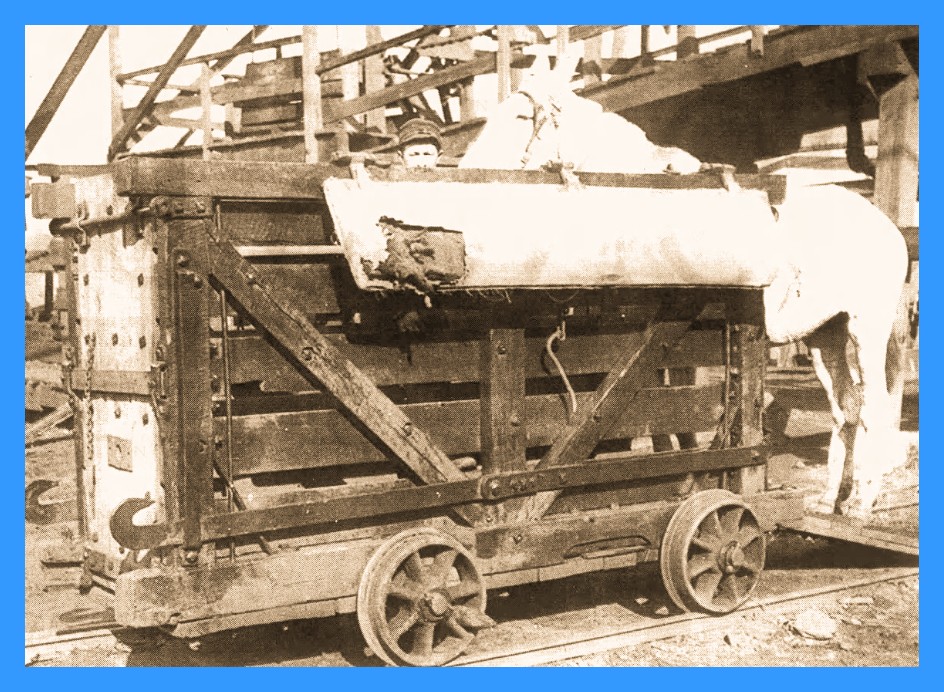A photograph from the 1880s showing a mule being loaded on a wooden car to be transported from the breaker into the mines at the Pine Forest Colliery.
From a series of articles that appeared in the Pottsville Republican and Herald in 1997:
The Pine Forest Colliery, which was located near Saint Clair on the south slope of the Mine Hill Mountain, was one of the most extensive collieries in the southern coal field.
The veins worked were the Seven-Foot, Mammoth and Skidmore. The colliery was operated by two slopes and a shaft. The water-level qangway was driven in the Mammoth by Samuel Sillyman and, to prevent drainage from the water level into the workings where the slope drove through, the water-level gangway was by-passed around the slope.
The mining overlying the slope workings (on account of drainage) was a source of trouble and, as the mining in the slope working advanced, cracks and fissures were encountered that increased the flow of water. Litigation followed.
The original operator of the Pine Forest Colliery was Milnes, Haywood & Snyder, which in 1840, sank the Pine Forest Slope along the western land line of its lease. It was a one-sided colliery.
Later, in 1848, the firm sank the Mount Hope Slope, east of the Pine Forest Slope, and more centrally located on the tract. Milnes, Haywood & Snyder retiring from the firm, operation of the collieries was continued under the new firm of Snyder and Milnes.
In 1854, George W. Snyder purchased Milnes’ interest in the collieries for $75,000, continuing the operation of the collieries under the new firm of George W. Snyder & Company to 1867, when the two slope collieries were abandoned as an individual part of the workings.
In 1864, Snyder & Company began the sinking of the Pine Forest Shaft with the intention of making this the main outlet of the workings. This was accomplished in 1867, when all coal mined was raised in the shaft.
The slope workings were driven on the lower levels until 1872, when the colliery was purchased by the Philadelphia & Reading Coal & Iron Company, which operated it until 1885, when it was abandoned.
In 1889, the Philadelphia & Reading Coal & Iron Company reopened parts of the workings driving a water-level gangway in the Buck Mountain Vein and tunneling to the overlying veins. Mining was continued in the water level until 1898, when it was abandoned as worked out.
Total shipment of coal from Pine Forest was 3,212,290 tons. The capital invested in 1852 was $100,000.
_______________________________________________
Article by Frank Blase, Historian, Reading Anthracite Company Historical Library, Pottsville Republican & Herald, August 2, 1997. Obtained from Newspapers.com.
Corrections and additional information should be added as comments to this post.
